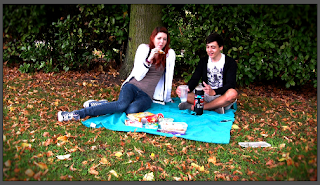Tomorrow, we are heading to London to film the opening section of our music video. After this filming session, we will film once more on Thursday, which will hopefully mean our filming is complete; we may have to reshoot small sections, but we are confident we captured enough footage to cover any mistakes we made.
To make efficient use of the small amount of time we have available, we have decided to plan a route we will use, as well as the locations we will film at. Below is an image of the notes we made.
Route
As we are meeting at
Dagenham East, this will be our starting point. We will then travel to
Temple, where we'll take a short walk to an area I found whilst on a photography trip. Below are three images I took on the photography trip, all of which show the area, and possibly the shots we will recreate.
After filming here, we will then return to Temple and travel to Monument, from which we will walk to Bank. From here, we will travel to Oxford Circus where we will film along both Oxford Street and Hanover Square. I have visited Hanover Square before, and hope to use the fountain area there in our music video.
Types of Shot We Hope to Use
As with the footage we have already captured, we hope to use a range of varying shots, including a long shot, extreme close up, and a pan shot. Additionally, we hope to use a large amount of differing angles to try and create different effects.
We also want to experiment with taking a long shot and shortening this using Final Cut Express. To do this, we would have to capture a piece of footage that's twice the length we want the final shot. We would then double the speed of this clip.
We also want to experiment with slow motion, and will therefore try to capture a lot of movement in our footage. Additionally, we have increased the speed of our mp3, meaning that Sarah would easily be allowed to sing along to the music. We will then slow down this footage to make the lip-synching the correct speed. We hope this will look effective. An example of this is shown in the clip below.





























